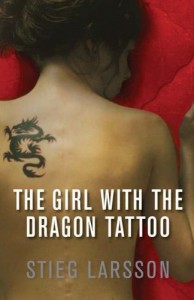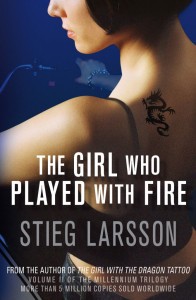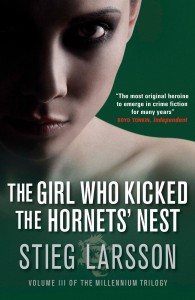
I’ve just finished Barry Forshaw’s The man who left too soon, a biography of Stieg Larsson, author of the runaway bestsellers, The Girl with the Dragon Tattoo, The Girl Who Played with Fire, and The Girl Who Kicked the Hornets’ Nest.
The Millennium Trilogy, as the collection is called, was published after Larsson’s death from a heart attack in 2004, aged 50. He was a journalist and an author who, sadly, never lived to see his books in print, or to enjoy the fame and immense fortune they and the ensuing movies generated.
Despite the conspiracy theorists’ popular notion that he was murdered by the teams of misogynists and right wing elements he actively condemned, Larsson died at his desk after struggling up seven flights of stairs. He was extremely unfit, a workaholic, chain-smoked, and was as much a lover of junk food as his protagonist, Mikael Blomkvist. Perhaps writers should take a note here.
Forshaw’s book is a blow-by-blow analysis of Larsson’s books and how they often mirrored the controversial writer’s life, although he would have been most unlikely, and very unlucky, to have actually encountered the other protagonist, the butt kicking, hate-filled, mean machine, Lisbeth Salander.

Forshaw also delves into the terrible acrimony surrounding Larsson’s estate, along with the possibility that a laptop exists with notes and drafts for another seven books in the series. How he could accomplish that feat after tying up The Millennium so tidily is anyone’s guess.
In the bio I particularly enjoyed the comments of other successful crime writers around the world. They were remarkably frank, and sans sour grapes, a phenomenon in itself. One publishing figure remarked that the first 100 pages of Larsson’s first book, despite a proper editing process—something the following two books missed out on—were so ponderous (and I agree) that if they represented a submission to a UK publisher by an unknown author, they would never have risen above the slush pile—so much for aiming for a dynamic, nail-biting start to every thriller.
Stieg Larsson was very much aware that most journalism is a matter of preaching to the converted. We generally read publications that confirm our own opinions, so reaching out to convince a reader that there’s an alternative view is difficult. One of Forshaw’s interviewees makes the point that fiction removes the boundaries of fixed opinion, leaving us open to contemplate new perspectives. Some would say open to suggestion.

Forshaw says that Larsson had a crusading personality and a fierce desire to right the wrongs of the world. If his books were, as they seem, a vehicle for his beliefs, it would make his untimely death that much more unfortunate, wouldn’t it? How much more he could have achieved will be cause for much ongoing speculation.
